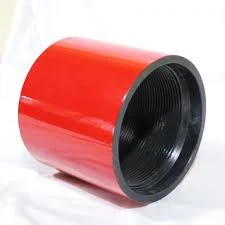2 月 . 15, 2025 03:08
Back to list
what are the differences between casing and tubing?
In the world of oil and gas extraction, understanding the difference between casing and tubing is fundamental for both engineers and those involved in the production process. These two components serve distinct purposes, undergo different stress conditions, and have unique design requirements, making their distinction crucial for operational success and safety in drilling operations. This article delves into each component's role, providing insights backed by expert knowledge and industry experience.
The authoritative and trustworthy selection of casing and tubing relies heavily on real experience and stringent adherence to industry standards. Casing design demands a sound understanding of the mechanical properties of steel, cementing practices, and formation pressures, validated through years of field learning and lessons from documented case studies. Trustworthiness in the industry emerges from accurate simulations, reliable testing, robust supply chain management, and alignment with international standards like API (American Petroleum Institute) specifications. Moreover, the differences between casing and tubing extend to the maintenance and inspection requirements. Casing integrity is usually verified via logging tools that assess cement bond quality and detect any potential breaches, using instruments such as caliper logs or casing inspection logs. Tubing inspection involves regular checks to prevent leaks, scale build-up, and corrosion. Technologies like electromagnetic inspection, ultrasonic testing, and pressure testing help ensure the tubing's integrity, contributing to a well's safe and efficient operation. Innovations are continually emerging in both casing and tubing designs. Enhanced materials, such as corrosion-resistant alloys and high-strength steels, are becoming more prevalent to address harsher downhole conditions and extend the service life of wells. Smart well technologies involving sensors integrated into casings and tubing help monitor real-time downhole conditions, offering improved diagnostics and operational efficiencies. Understanding the pragmatic differences between casing and tubing is pivotal in well architecture and operational decision-making. While both serve to optimize oil and gas extraction, careful consideration of their unique properties and functions, backed by experience, expertise, authority, and trust, drives successful and sustainable well operations. To thrive in this arena, industry professionals must continually advance their knowledge and practices in designing and maintaining these critical components.


The authoritative and trustworthy selection of casing and tubing relies heavily on real experience and stringent adherence to industry standards. Casing design demands a sound understanding of the mechanical properties of steel, cementing practices, and formation pressures, validated through years of field learning and lessons from documented case studies. Trustworthiness in the industry emerges from accurate simulations, reliable testing, robust supply chain management, and alignment with international standards like API (American Petroleum Institute) specifications. Moreover, the differences between casing and tubing extend to the maintenance and inspection requirements. Casing integrity is usually verified via logging tools that assess cement bond quality and detect any potential breaches, using instruments such as caliper logs or casing inspection logs. Tubing inspection involves regular checks to prevent leaks, scale build-up, and corrosion. Technologies like electromagnetic inspection, ultrasonic testing, and pressure testing help ensure the tubing's integrity, contributing to a well's safe and efficient operation. Innovations are continually emerging in both casing and tubing designs. Enhanced materials, such as corrosion-resistant alloys and high-strength steels, are becoming more prevalent to address harsher downhole conditions and extend the service life of wells. Smart well technologies involving sensors integrated into casings and tubing help monitor real-time downhole conditions, offering improved diagnostics and operational efficiencies. Understanding the pragmatic differences between casing and tubing is pivotal in well architecture and operational decision-making. While both serve to optimize oil and gas extraction, careful consideration of their unique properties and functions, backed by experience, expertise, authority, and trust, drives successful and sustainable well operations. To thrive in this arena, industry professionals must continually advance their knowledge and practices in designing and maintaining these critical components.
Latest news
-
Unlock the Benefits of Pup Joints for Your OperationsNewsOct.31,2024
-
The Quality of Casing Couplings from ChinaNewsOct.31,2024
-
The Essential Role of Pup Joints in Drilling OperationsNewsOct.31,2024
-
The Benefits of Tubing Couplings for Your ProjectsNewsOct.31,2024
-
Enhance Your Drilling Operations with Tubing Pup JointsNewsOct.31,2024
-
Elevate Your Drilling Operations with Tubing CrossoversNewsOct.31,2024
Related Products







